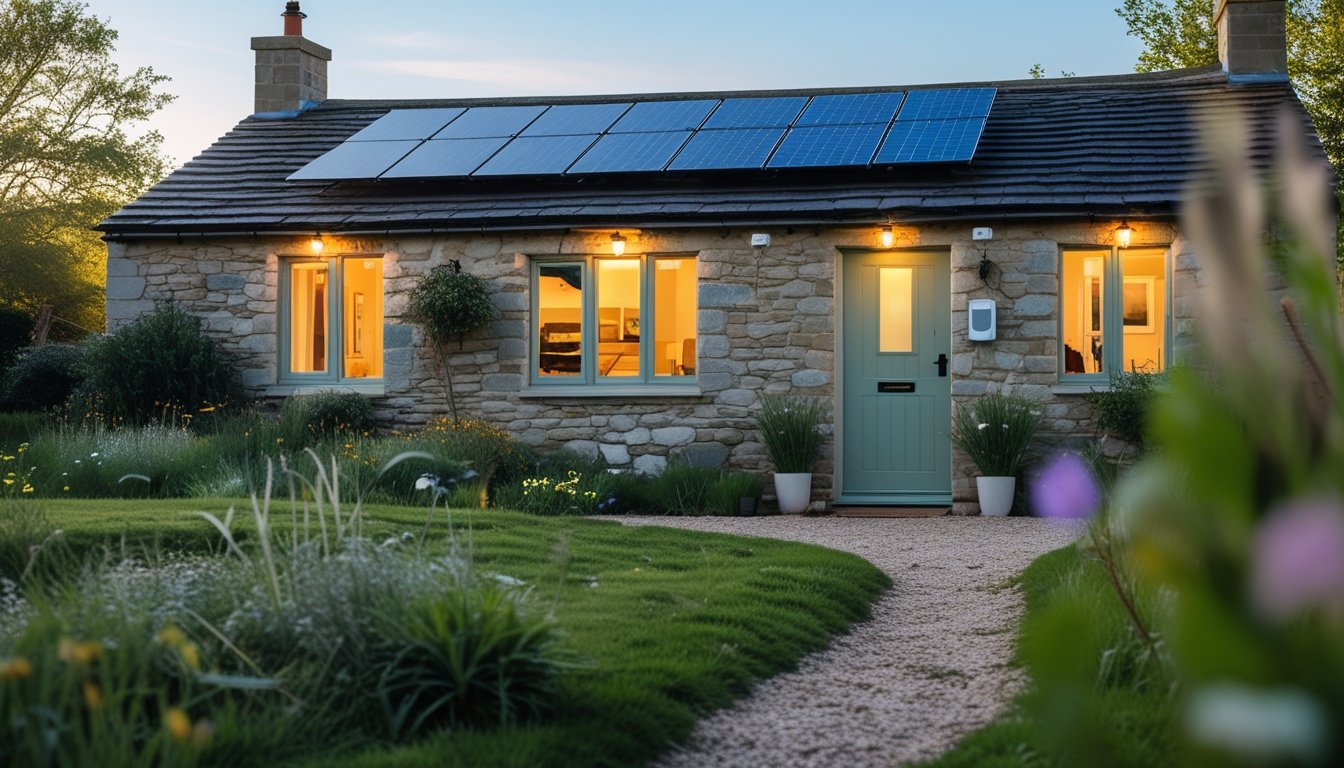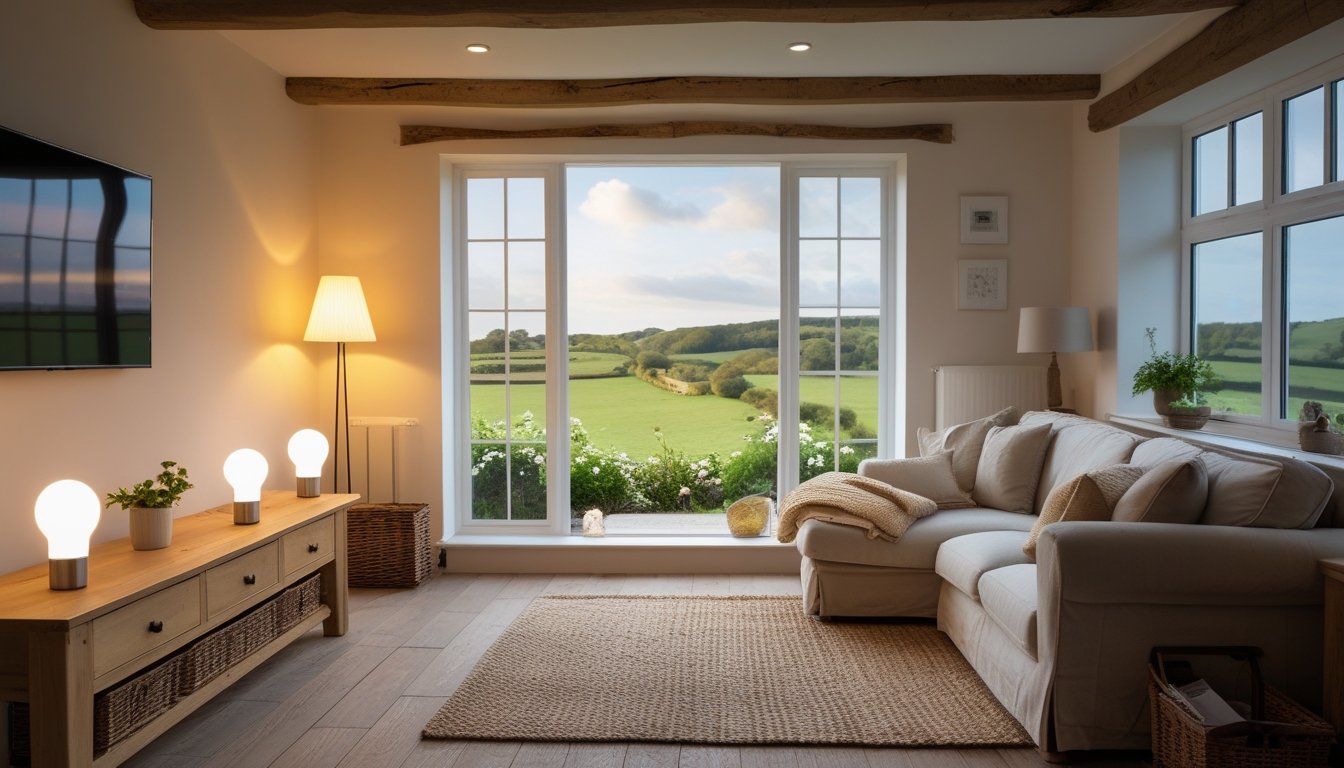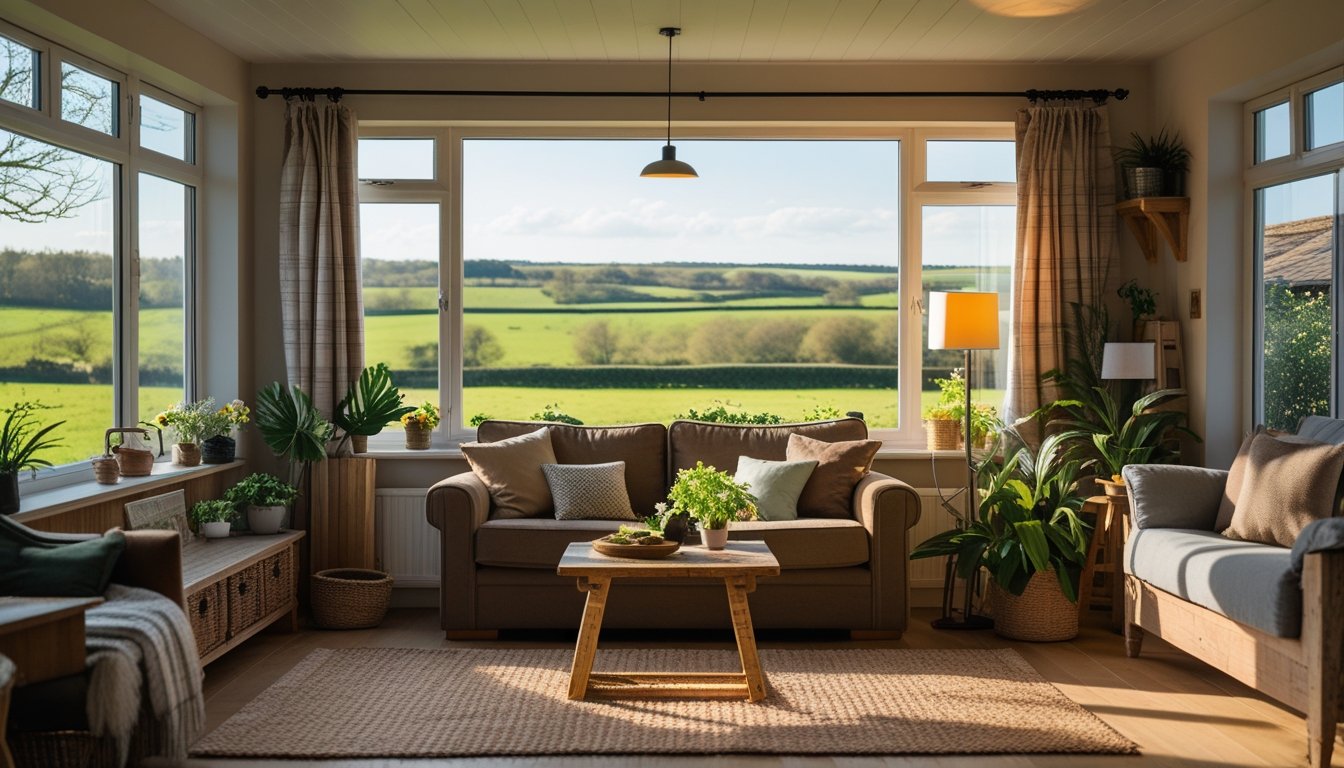Late updated: 27 Nov 2025 09:11
Written by: Oliver Bennett
Energy-Efficient Lighting Tips For Rural UK Homes: Maximising Savings and Sustainability
Improving energy efficiency in lighting is not just an urban concern but a crucial consideration for rural UK homes as well. Many homeowners are seeking practical ways to reduce electricity bills and enhance both sustainability and comfort. By prioritising energy-efficient lighting options such as LED bulbs and smart lighting systems, we can significantly reduce energy consumption without sacrificing brightness or style.

For those residing in rural areas, there are specific challenges in ensuring optimal lighting during the long winter nights. With careful planning and the right choices in lighting, it's possible to maintain a well-lit home that is both energy-efficient and cost-effective. Utilising options like energy-saving bulbs and designing with natural light in mind can create a welcoming and efficient environment.
Understanding the principles and practical applications of energy-efficient lighting provides a path toward reducing environmental impact and enjoying immediate cost savings. Our goal is to illuminate the ways in which rural homeowners can adopt smarter lighting solutions that benefit both their homes and the planet.
Key Takeaways
- Energy-efficient lighting reduces consumption and costs.
- LED and smart systems enhance both efficiency and style.
- Proper planning enables sustainable lighting in rural homes.
Fundamentals Of Energy-Efficient Lighting For Rural UK Homes

In rural UK homes, transitioning to energy-efficient lighting involves understanding key concepts and technologies that reduce energy consumption and lower electricity bills. We can make informed decisions by exploring modern lighting technologies compared to traditional bulbs, principles for reducing energy use, and essential light metrics like lumens, watts, and colour temperature.
How Modern Lighting Technologies Compare To Traditional Bulbs
Traditional bulbs like incandescent and halogen lamps are now largely obsolete due to their high energy consumption and short lifespan. These bulbs convert a significant portion of electrical energy into heat rather than light, leading to inefficiencies. LED bulbs (Light Emitting Diodes) and CFLs (Compact Fluorescent Lamps) offer modern solutions that mitigate these issues. LED lighting, in particular, stands out due to its low energy use and extended life. LEDs require far fewer watts than incandescents to produce the same number of lumens, highlighting their energy efficiency. CFLs also offer a substantial improvement but contain small amounts of mercury, requiring careful disposal. In rural homes, shifting to LEDs can significantly reduce carbon footprints and electricity bills, aligning with environmental goals.
Principles Of Reducing Energy Consumption And Bills
Reducing energy consumption begins with selecting the right lighting technologies. LEDs are notably efficient, using up to 80% less energy than conventional bulbs. Besides choosing the right bulbs, ensuring proper installation and maintenance can optimise performance. Strategies like using dimmers and timers can adjust lighting according to need, further reducing consumption. Additionally, natural lighting is an undervalued resource in rural areas, and homes should maximise this by designing interiors with ample windows and reflective surfaces. These efforts collectively minimise electricity use, translating to lower energy bills and a reduced environmental impact. Emphasising the carbon footprint reduction through these choices also contributes positively to the broader climate change agenda.
Understanding Light Output: Lumens, Watts, And Colour Temperature
Understanding the metrics related to light output is crucial. Lumens measure brightness, not watts, which indicate energy use. More lumens mean brighter light. When we shop for bulbs, opting for higher lumens with lower wattage signifies better energy efficiency. Colour temperature impacts the atmosphere of a room, measured in Kelvin. For example, warm white (2700K-3000K) offers a cosy feel, suitable for living spaces, while cool white (3500K-4100K) suits task-oriented areas like kitchens. CRI (Colour Rendering Index) is also essential, as it indicates how accurately colours appear under a light source. A higher CRI improves visual appeal, crucial for areas with detailed tasks. Understanding these concepts empowers us to choose lighting that suits our needs efficiently.
Practical Energy-Efficient Lighting Solutions And Tips
In rural UK homes, energy-efficient lighting offers significant benefits, from cost savings to a reduced carbon footprint. Implementing the right bulb choices, smart controls, and effective use of natural light can elevate efficiency and comfort.
Selecting The Right Bulbs For Each Room
Different rooms require different lighting needs, so it's essential to choose the right bulbs. LED bulbs are a fantastic choice for general lighting owing to their long lifespan and energy efficiency. In the kitchen and study areas, consider using task lighting with a GU10 setup for focused illumination. For bedrooms and living areas, dimmable bulbs are an excellent option to create a cosy atmosphere. Using energy-efficient options like CFL bulbs can also contribute to reduced energy consumption without sacrificing brightness. By carefully selecting light bulbs tailored to each room's function, we maximise energy savings and enhance our home's comfort and functionality.
Maximising Savings With Smart Lighting And Controls
Smart lighting systems offer incredible flexibility and control over energy usage. Incorporating smart bulbs, home automation systems, and dimmer switches allows us to adjust lighting settings based on our needs and preferences. Motion sensors can further enhance savings by ensuring lights are only on when needed, especially in frequently used areas like hallways and bathrooms. Using smart home apps, we can schedule lighting or control it remotely, ensuring that lights are never left on unnecessarily. This integration of technology helps us optimise energy consumption while also adding convenience to our daily lives.
Utilising Natural Light And Insulation Strategies
Leveraging natural light is an effective way to reduce dependence on artificial lighting. Strategically placing mirrors can amplify sunlight in a room, and ensuring windows are uncovered during daylight hours maximises natural light utilisation. In addition to these strategies, proper insulation plays a critical role. Rooms that are well-insulated retain warmth better, making them more comfortable during the day and reducing the need for artificial lighting. By combining these approaches, we not only reduce energy costs but also create a more pleasant living environment.
Enhancing Outdoor Lighting Efficiency
For outdoor areas, energy-efficient lighting can significantly lower our electricity bills while maintaining security and aesthetics. Using solar-powered lights or LED options for outdoor lighting minimises energy requirements. Motion sensors on outdoor lights ensure they only operate when necessary, providing added security without wasting energy. Additionally, setting outdoor lights on timers or using smart systems guarantees they’re only on during specific times of night. These methods collectively reduce our energy footprint while ensuring safe and attractive outdoor spaces.
By implementing these practical solutions, we can make our rural UK homes more energy-efficient, saving money while living sustainably.
Frequently Asked Questions

In rural UK homes, energy-efficient lighting offers practical solutions to reduce electricity usage, lower bills, and enhance living conditions. With the growing need for sustainability, we explore some commonly asked questions about energy-efficient lighting.
What are the best low-energy light bulbs for rural homes?
Low-energy light bulbs such as LEDs and CFLs are highly effective for rural homes. LEDs provide brilliant lighting and have a longer lifespan than traditional incandescent bulbs. They're slightly more expensive upfront but the savings on energy bills make them a wise choice. CFLs also offer energy efficiency at a lower initial cost.
How can LED lighting reduce electricity costs in rural UK properties?
LED lighting significantly cuts electricity consumption as it uses up to 80% less energy than traditional bulbs while delivering the same level of brightness. This translates into lower energy bills, which is particularly beneficial in areas where electricity costs might be higher. Their durability also means reduced replacement frequency, adding to further savings.
What are effective lighting strategies for maximising natural light in remote areas?
Maximising natural light can be achieved by using light-enhancing paint colours and strategically placing mirrors to reflect natural light. Skylights and large windows facing south can capture more daylight. These methods are effective in boosting natural light, especially during shorter winter days, reducing reliance on artificial lighting.
Could outdoor solar-powered lighting be a reliable option for rural UK homes?
Solar-powered lighting is an excellent choice for rural outdoor areas, given the expansive open spaces. While its efficacy depends on sunlight availability, advancements in battery storage have improved reliability. It provides an energy-free solution for gardens and yards, helping both the environment and the wallet.
How can motion sensors contribute to energy savings in home lighting systems?
Motion sensors ensure lights are only on when needed, preventing unnecessary energy use. They are particularly useful in less-frequented areas like hallways or outdoor spaces. By automatically turning off lights when no movement is detected, they significantly reduce energy wastage, adding to electricity cost savings.
What government schemes are available to support energy-efficient lighting in the countryside?
Various government schemes exist to assist rural homeowners in adopting energy-efficient lighting. Programmes like the Green Deal provide financial incentives and resources for energy improvements. Checking eligibility and application requirements can lead to significant savings and benefits for rural households looking to improve energy efficiency.
